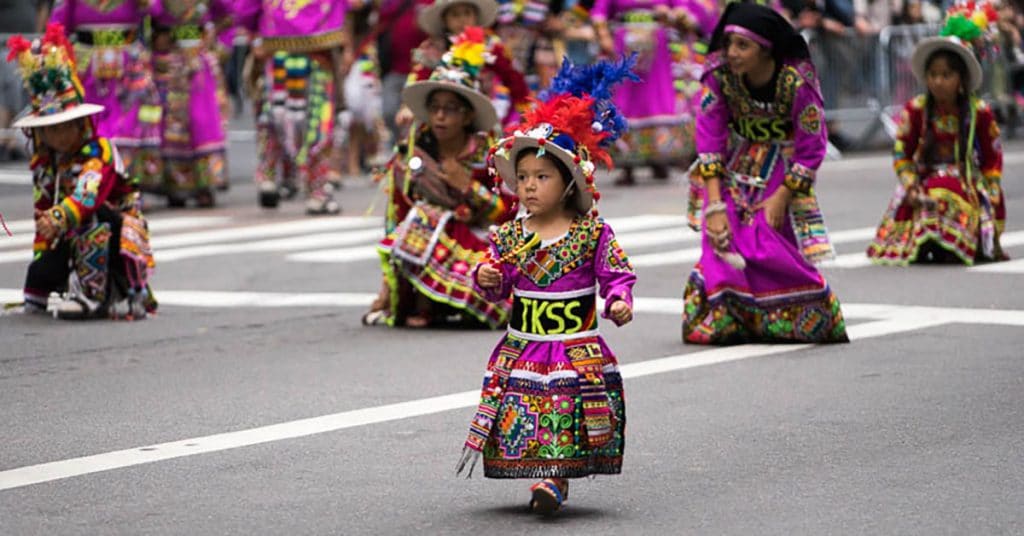The Hispanic Day Parade is an opportunity for the twenty-one Hispanic communities to share our heritage with our children, recognize contributions to society, and have a little fun.
55th Hispanic Day Parade
The 55th Hispanic Day Parade marches up Fifth Avenue from 44th St to 77th St in Midtown, Manhattan on Sunday, October 13, 2019 from 11am to 4pm. FREE
What is Hispanic anyway?
The Spanish Empire was the first global empire in history. It ranged the world from 1492 until 1976. Even the western two-thirds of what is now the United States was once part of New Spain.
The Spanish conquerors seeded their language, Catholic religion, and many traditions across the Empire. They also brought genocide, slavery, disease and unstable social, economic and political systems. Much of this legacy remains with us today.
Every country has good and bad things about it, but in the Hispanic countries we are generally proud, very proud of our Hispanic heritage. Latin Americans still send their children to learn to dance flamenco as an expression of our Hispanidad (Hispanic-ness).
Many non-Spanish speakers think the Spanish-speaking world is monolithic, that we are all the same. In fact each Hispanic country has a different blend of people, geography and history.
We are unique blends of Indigenous, Spanish and African people and cultures. Reconciling these is a challenge we continue to face today – even in the United States.
The Spanish Empire began to fall apart with the Peninsular War of 1807 to 1814. Napoleon put his brother on the Spanish throne so Spaniards around the world decided to set up self-government. Eventually they all chose independence.
The Spanish Empire in the Americas ended with the Spanish-American War of 1898. Cuba, Puerto Rico and the Philippines became the first pieces of the American Empire.
Hispanic Countries
The Spanish Empire claimed parts of Africa, the Caribbean, Central America, South America and Asia.
Many regions were originally Spanish, but today we tend to see countries in relation to their last colonial power. We think of many independent countries as more British, French or Dutch, but there is a Spanish cultural overlay underneath.
Hispanic Caribbean Countries
Cuba | Dominican Republic | Puerto Rico
Hispanic Central American Countries
Costa Rica | El Salvador | Guatemala | Honduras | Mexico | Nicaragua | Panama
Panama was a state of Colombia until the United States encouraged separation in order to build the Panama Canal. Today it is considered part of Central America, but the culture remains more South American than Central American.
Hispanic South American Countries
Argentina | Bolivia | Chile |Colombia | Ecuador | Paraguay | Peru | Uruguay | Venezuela
Hispanic Asian Countries
The Phillipines was Spanish for about 300 years. The Pacific galleon route ran between Acapulco, Mexico and Manila, Philippines.
The American occupation changed the Filipino character, but Spanish influences, especially Catholicism remain.
The Hispanic Day Parade makes us better Americans of the United States
The Hispanic Day Parade brings all of this together on Fifth Avenue in New York City. In this city of immigrants, we are proud to be Americans with a Hispanic Heritage.
We do the Hispanic Day Parade every year so our children will have some idea of who they are. We believe that knowing this makes them and us, better Americans of the United States.

